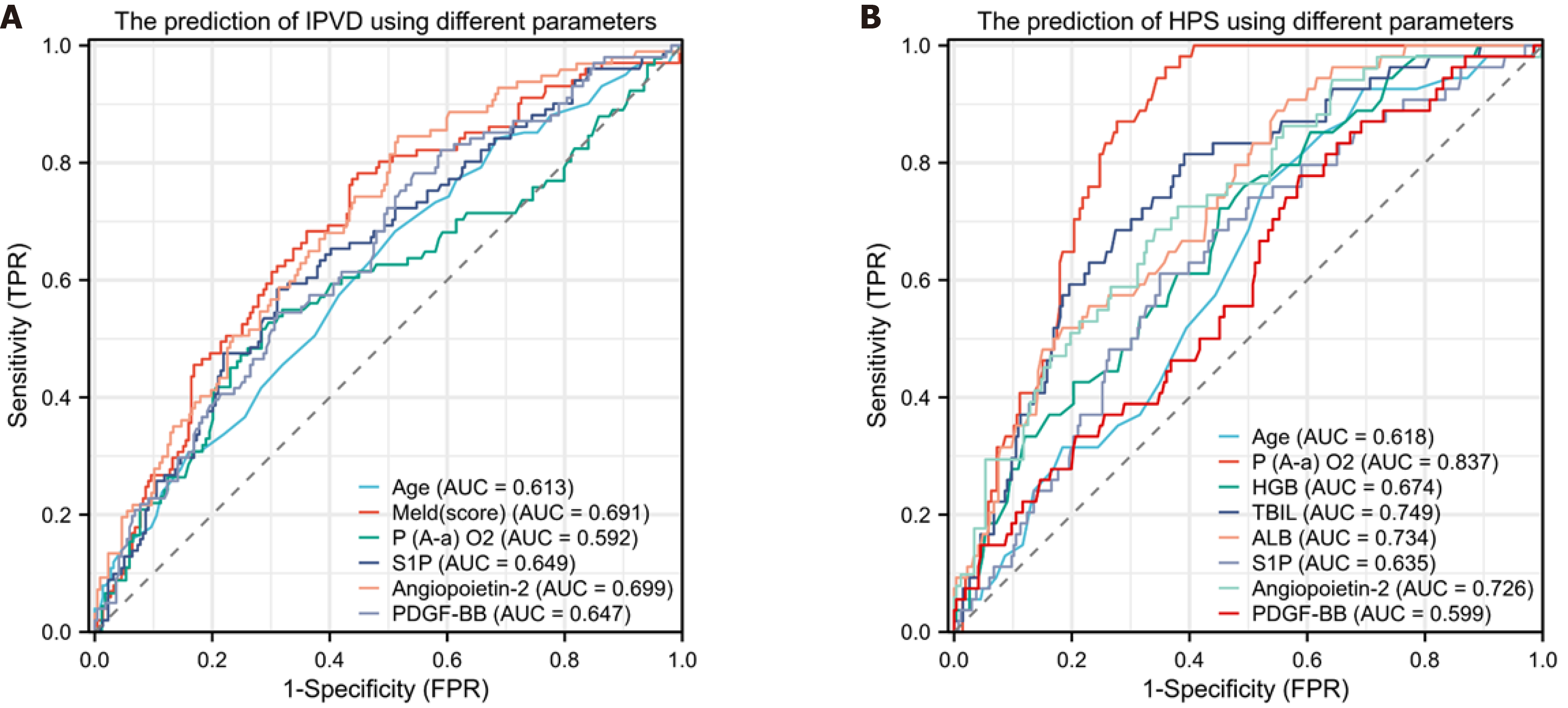Copyright
©The Author(s) 2025.
World J Gastroenterol. Apr 21, 2025; 31(15): 105720
Published online Apr 21, 2025. doi: 10.3748/wjg.v31.i15.105720
Published online Apr 21, 2025. doi: 10.3748/wjg.v31.i15.105720
Figure 3 Receiver operating characteristic curves for predicting intrapulmonary vascular dilatation and hepatopulmonary syndrome by different parameters.
A: Predicting intrapulmonary vascular dilatation (IPVD) in patients with cirrhosis. Area under the curve (AUC) for: Age was 0.613 (95% confidence interval [CI]: 0.546-0.679), Model for End-Stage Liver Disease (MELD) (score) 0.691 (95%CI: 0.629-0.753), arterial oxygen pressure 0.565 (95%CI: 0.496-0.633), reticulocalbin 3 0.587 (95%CI: 0.518-0.656), sphingosine 1 phosphate (S1P) 0.649 (95%CI: 0.584-0.714), angiopoietin-2 0.699 (95%CI: 0.638-0.760), and platelet-derived growth factor BB (PDGF-BB) 0.647 (95%CI: 0.583-0.711); B: Predicting hepatopulmonary syndrome (HPS) in patients with cirrhosis. AUC for age was 0.618 (95%CI: 0.542-0.693), pulmonary alveolar-arterial oxygen gradient (P(A-a)O2) 0.837 (95%CI: 0.790-0.885), hemoglobin (HGB) 0.674 (95%CI: 0.600-0.749), total bilirubin (TBIL) 0.749 (95%CI: 0.681-0.818), albumin (ALB) 0.734 (95%CI: 0.667-0.801), S1P 0.635 (95%CI: 0.556-0.713); angiopoietin-2 0.726 (95%CI: 0.652-0.800), and PDGF-BB 0.599 (95%CI: 0.519-0.679). FPR: False-positive rate; TPR: True-positive rat.
- Citation: Wu ZP, Wang YF, Shi FW, Cao WH, Sun J, Yang L, Ding FP, Hu CX, Kang WW, Han J, Yang RH, Song QK, Jin JW, Shi HB, Ma YM. Predictive models and clinical manifestations of intrapulmonary vascular dilatation and hepatopulmonary syndrome in patients with cirrhosis: Prospective comparative study. World J Gastroenterol 2025; 31(15): 105720
- URL: https://www.wjgnet.com/1007-9327/full/v31/i15/105720.htm
- DOI: https://dx.doi.org/10.3748/wjg.v31.i15.105720









